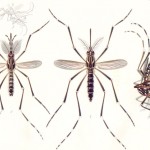by Catherine Haug, July 5, 2013
We all listened with heavy hearts when we learned of the hundreds who lost their homes or died as a result of the recent flooding in Alberta. But while this was an unusual weather event (compared to past history), it may just be an example of what is to come as our weather systems become more extreme from the effects of global climate change.
Whether you believe climate change is a natural cycle of nature, or is at least partly caused by human actions, the fact is that our climate IS changing. And any one of us could experience intense weather and flooding of this magnitude. In fact, it has happened in the Flathead’s recent history: the 1964 flood.
Karsten Heuer of Canmore, Alberta writes of the flood, “This is our wake-up call. We know from climate change models that heavy rain events and flash floods like this will happen more frequently. Our infrastructure is not built for this extreme weather. Our communities – including major cities like Calgary – are situated on flood plains. And clear-cut logging near our headwaters undermines the forests’ ability to absorb and slow down the flow of water.”
There are things we can do to minimize the devastating effects of events such as were experienced in Alberta. Perhaps the most important is to protect the ecosystem of our headwaters, as described in the following essay by Karsten Heuer of the Yellowstone to Yukon Conservation Initiative (Y2Y) team.
Read on for all of Karsten’s essay. (more…)
